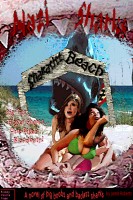Something about the legend of the mothman, often
classified amongst cryptozoological legends like Bigfoot and the Loch Ness
Monster, that stimulates a degree of seriousness not reserved for those others.
There have been several films on Bigfoot and Nessie, most of them silly and of
very poor quality. The mothman, however, inspired The Mothman Prophecies (2000),
one of the most elegant, mysterious, and mature horror movies since The
Haunting (1960). And when one watches the various documentaries on Bigfoot and
Nessie, where cryptozoologists build upon one another’s loose, largely invented
or at least misconstrued data, and then a documentary like Eyes of the Mothman,
one can see why there is such a difference. Because the mothman is not just a
creature, it’s a protracted series of events that seem to contain some
undeniable reality.
Eyes of the Mothman, much like The Mothan Prophecies, is an
elegant and evolved work. The genteel shots of the local environments, the
poetic voice of narrator Richard Pait that suggests honesty and patience, and
the quotes from poets like Tennyson are the earliest cues that this is not the
ordinary conspiracy/UFO documentary. As Eyes scrutinizes Point
Pleasant from the Revolutionary War through TNT stockpiling, the
mothman events and up to the present, the cues are confirmed. Eyes’s two-and-a-half
hour runtime is intimidating, but ultimately justified by the breadth of research.
Eyes begins with the local folklore of Revolutionary War-era
Chief Cornstalk’s supposed curse on the land. The anthropological scrutiny of
the curse is given objectively: Native curses were land-based rather than
individual-based, for various reasons. This grounding is not the basis for the
remainder of the documentary, but serves two perhaps opposes purposes. The
first is to start in mystery, the possibility of something spiritual or
unnatural. The other is to show a small town prone to self-mythologizing. Director
Pellowski deserves credit for allowing both suggestions to coexist.
Next is a fretting discussion of the World War TNT
stockpiles in the Point Pleasant wilderness. Local ponds
were frequently contaminated and mutant fish have been discovered. Eyes has its
weaknesses on issues of science. The professor interviewed casually remarks
that intelligent life has only been on earth for two-thousand years. That would
make Socrates a feces-flinging primate. So rather than involve real biologists
in the discussion, the possibility that the mothman is a genetic mutation is glibly
implied without scrutiny. Again, this grounding has two purposes. For one, the vastly
unpredictable worlds of biology and chemistry gives a natural alternative to
Native curses. But Pellowski is also showing a small town distrustful of
outsiders, including—if not especially—its own government.
Eyes thankfully plunges from there right into the peculiar
phenomena of the mothman sightings. The rashes, swollen eyes, and psychological
disturbances of the sightings are described by actual sufferers or other Point
Pleasant locals. The relationship to the TNT stockpiles takes on
some credibility. Some biologists did then and still now suggest witnesses only
saw a particularly large, foreign crane—perhaps a mutant one.
Point Pleasant's situation develops from the mothman sightings into UFO sightings,
visitations by men in black, the appearance of a strange man known as ‘Indrid
Cold’—an innately creepy name, I think—the prophecies of things to come, and
finally the collapse of the bridge. Following that particular tragedy, all the weird
phenomena stops. Either the mass hysteria has been blown away by genuine
tragedy, or there was a real and occult trajectory to the strange events.
The complexity of the series of events encompassed by the
rubric ‘mothman’ is highly fascinating in itself, of course. There is just so
much more to the Point Pleasant events than the mothman
sightings. But what’s more interesting is how Eyes presents the mothman
sightings as a real community event. Locals describe hanging around an area
known for sightings, hoping to see the mothman. One even says it was like going
to the drive-in. They were afraid of it, and yet they loved it. The mothman
brought excitement in a boring town. The men in black brought a feeling of
significance and importance. The bridge tragedy brought sense, one way or
another.

2 comments:
Excellent write-up. I've seen this on Netflix but often pass it up due to the length. A documentary that long usually wouldn't hold my attention. However, like you pointed out, there is something about the Mothman that makes me want to take it more seriously, where other cryptids can easily be passed of as mis-identification. I will hopefully have the chance this week to view it and will follow up with my thoughts.
I'm not sure if it's still on netflix, but it's worth tracking down. Looking forward to your thoughts.
Post a Comment